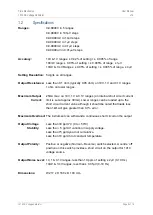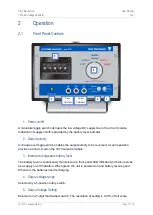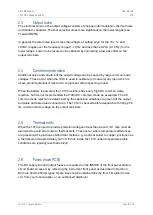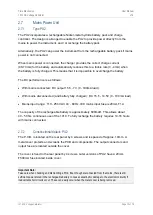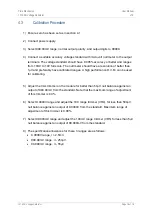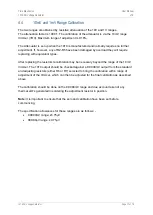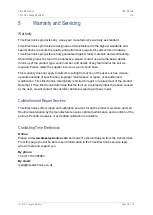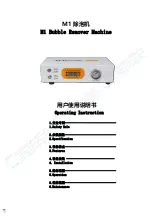
Time Electronics
User Manual
1010 DC Voltage Calibrator
v1.2
1010 DC Voltage Calibrator
Page 9 of 19
2.3
Output noise
The electrical noise on the output voltage consists of chopper intermodulation, thermal noise
and random variations. Thermal noise becomes more significant on the lower ranges (see
Thermal EMFS).
In general, the total noise level is less than 20ppm of setting ±2
µ
V for the 10v, 1v and
100mV ranges over the frequency range 0 - 10 Hz and less than ±0.2
µ
V (0-10 Hz) for the
lower ranges. Lower noise levels can be obtained by connecting a low pass filter on the
output terminals.
2.4
Common mode noise
Additional noise and variation of the output voltage can be caused by large common mode
voltages. These occur when the 1010 is used to calibrate (or measure) any input which is
above ground potential or has an AC component with respect to ground.
When the battery is powered, the 1010 has inherently a very high DC common mode
rejection, but it is not recommended that 100V DC common mode be exceeded. The AC
common mode rejection is determined by the capacitive unbalance to ground of the output
terminals and associated connections. The 1010 is checked before despatch with 30Vpp 50
Hz common mode voltage on the output terminals.
2.5
Thermal emfs
When the 1010 is used to provide precision voltages of less than about 1mV, care must be
exercised to avoid errors due to thermal emfs. These occur where temperature differences
are present at the junctions of dissimilar metals, e.g. a normal solder to copper junctions has
a thermal emf of approximately 3µV/°C. Errors inside the 1010 under temperature stable
conditions are typically less than ±0.2
µ
V.
2.6
Fuses
(main PCB)
The DC supply line and output fuses are mounted on the INSIDE of the front panel printed
circuit board. Access is by removing the instrument front panel as described in Section 3.
Both are 20mm 250mA types. Spare fuses can be obtained directly from Time Electronics
Ltd, from your local supplier, or an authorised distributor.





